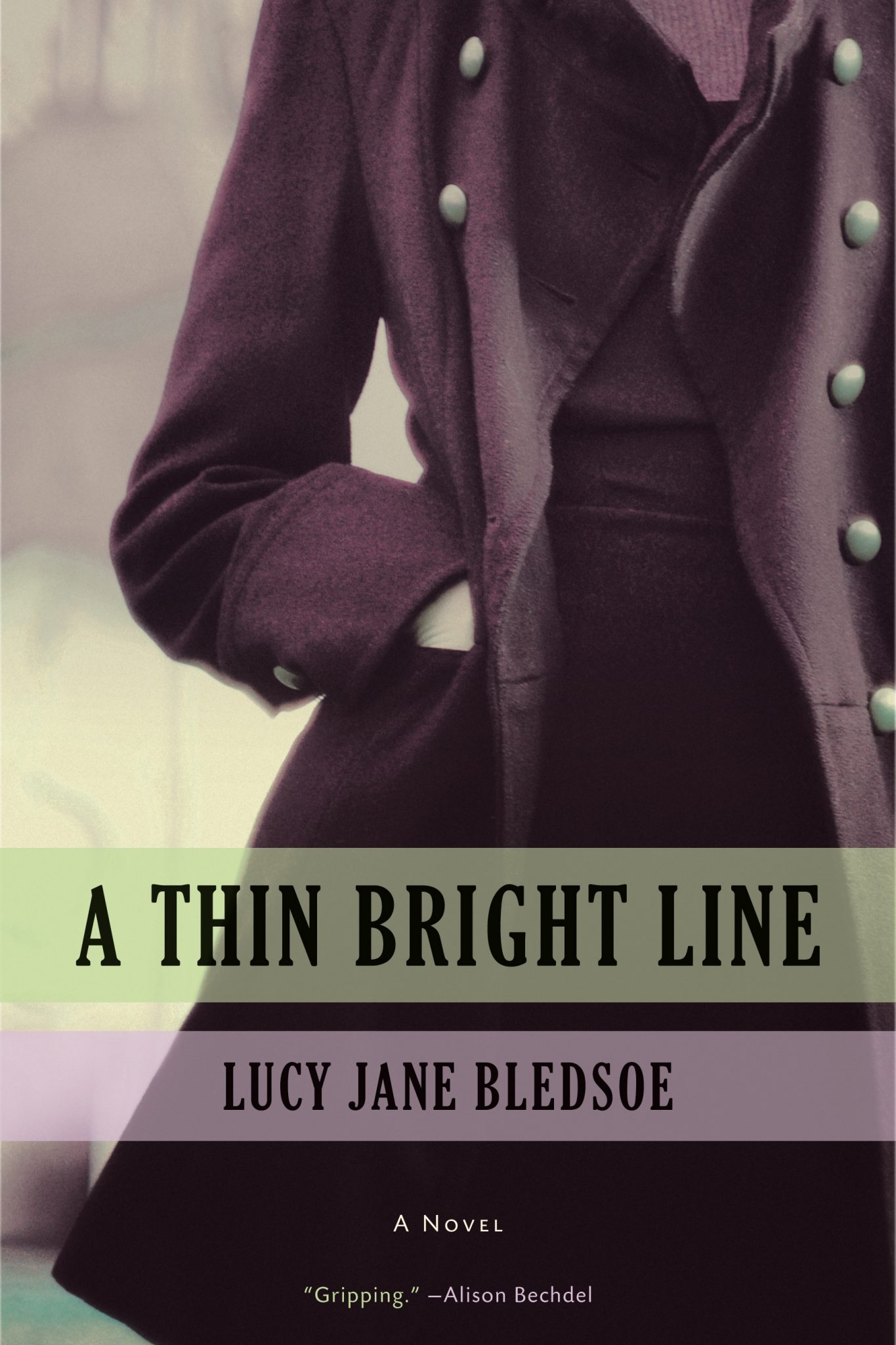“There is so much we don’t know, can’t know, in doing historical research. Emma Donoghue writes, in the afterword of her collection Astray, ‘when you work in the hybrid form of historical fiction, there will be Seven-League-Boot moments: crucial facts joyfully uncovered in dusty archives and online databases, as well as great leaps of insight and imagination. But you will also be haunted by a looming absence: the shadowy mass of all that’s been lost, that can never be recovered.’” (Postscript)
A Thin Bright Line, by Lucy Jane Bledsoe, tells the story of a life lived fully, yet not quite openly. Bledsoe starts from the end of her namesake, Lucybelle Bledsoe’s, life and proceeds to build on the available fragments. The two women’s lives follow amazingly similar career paths and sexual orientation, despite decades and miles apart. Bledsoe was nine years old when her aunt died in an apartment fire in 1966. As a result, she has few clear memories of her aunt, a vague, albeit benevolent, figure who made periodic visits and sent gifts. The woman was a benign mystery to her family. In an era without social media and portable devices tracking every move, it was much easier to leave without a trace, or else leave behind few clues about who you were.
A detailed entry for Lucybelle, found by chance in The Biographical Dictionary of Women in Science: Pioneering Lives from Ancient Times to the Mid-20th Century, as well as an obituary in the Journal of Glaciology, sparked years of research leading to this novel. Bledsoe scavenged her father’s memories of his sister. Among them, her aunt’s aspirations to write a novel; her penchant for organizing school-wide jokes and flash mob-type performances; and reciting humorous poetry. As for the adult Lucybelle became, there is far less information available. A handful of primary documents, such as the reports left behind following the fatal apartment fire, and interviews with the remaining people who knew her aunt in some capacity, were all that remained of a seemingly rich and vibrant life.
Lucybelle Bledsoe was born in 1923 to a devout Christian household in Pocahontas, Arkansas. Her mother was a housewife and her father had a dual career as a farmer and county judge. As a child, Lucybelle displayed a keen intellect, as evidenced by her voracious reading habits and ability to pass the Arkansas bar without having had attended law school. The novel spans a decade and opens on New York City, 1956, about ten years after she left her hometown. The former country girl had by this time built a successful career for herself at the Geological Society of America as an Assistant Editor. She shares an apartment with her longtime girlfriend, Phyllis, and their dachshund, L’Forte. She also enjoys the city’s nightlife with a core group of friends. Everything seems good enough, even if it involves a bit of compromise. However, her life is upended when her relationship shatters and a sudden job offer is pushed at her by Henri Bader, a European ice scientist working for the US Army Corps of Engineers.
The novel flows from New York to Chicago to Vermont. Along the way, Lucybelle experiences overt and vague threats from her employer and sources unknown. She learns how to compartmentalize her life, balancing her employer’s demands that she refrain from dating women with a challenging career. The novel is full of coded terrain: her workplaces at Snow Ice and Permafrost Research Establishment (SIPRE) and Cold Regions Research and Engineering Laboratory (CRREL), and her private and family lives. Through her relationships and career, Lucybelle makes sense of the path she wants her life to take. Despite having her life extinguished just as she seems to fully realize it, the novel is an incredible tribute.
Bledsoe paints a sensitive, nuanced portrait of her aunt, displaying an understanding of the period’s public, private, and personal politics, and social mores. Some of the characters are works of fiction, such as Lucybelle’s Chicago girlfriend Stella, her cluster of friends in New York City, and coworkers at the Cold Regions Research and Engineering Laboratory in New Hampshire. However, the many lives that factor into this story all reflect some aspect of life during the Cold War, in the period covering 1956-1966. Each of the women featured react differently to societal pressures and offer a sort of option for how Lucybelle might conduct her own life. A Thin Bright Line is an engaging and immersive story, featuring strong, intelligent women.
Mid-century queer history is fascinating and complex. Most of the literature and sources mentioned in the novel can be borrowed via public libraries in the United States or purchased online. I acquired the first two volumes of collected issues of The Ladder via my local public library’s interlibrary loan system. I recommend supplementing your reading with the titles listed below.
You can read more of Julie’s reviews on her blog, Omnivore Bibliosaur.



